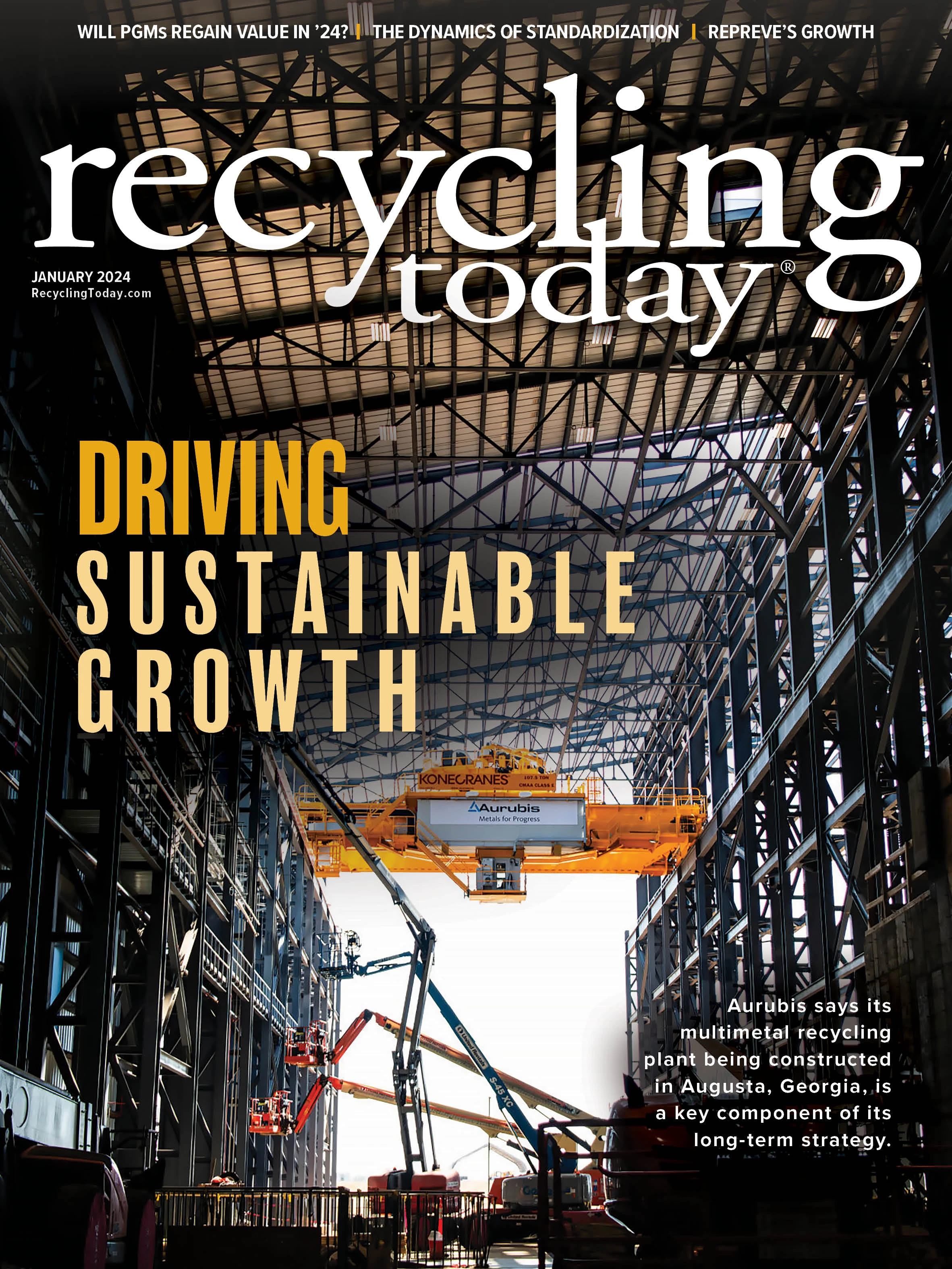Holiday cheer can come in many forms, but for ferrous scrap generators and processors in the U.S., two months of upward pricing pressure could have inspired some additional happiness.
The 2023 calendar year included several months where prices and inventory value lost ground, so increased bids from domestic and overseas buyers alike were anticipated for a considerable stretch.
By the second week of December 2023, near the traditional monthly mill negotiating deadline, Davis Index surveying indicated domestic mills were paying an average of $441 per ton for the prompt No. 1 busheling grade.
While $441 per ton for prompt scrap might not be lofty necessarily compared with 21st century peak periods, the figure represents a nearly 10 percent rebound from the $402 per ton that was paid two months earlier.
“Flows have not been very good; in November, we took in 28 percent less than the average of the year, and December has been slow to start.” – a recycler based in the Great Lakes region
The prolonged slump, which essentially ran from mid-May until late October of last year, had a devastating effect on flows into some yards. “Flows have not been very good,” a Great Lakes recycler said in early December. “In November, we took in 28 percent less than the average of the year, and December has been slow to start.”
Nonferrous pricing in the U.S., especially for aluminum, could have helped some processors attract peddlers and mixed-stream metal scrap generators, but ferrous buyers indicate they’ll need a couple strong months to lure back obsolete supply.
Steady demand from domestic steel mills along with reduced supply at yards placed long-awaited price pressure on ferrous scrap.
According to the American Iron and Steel Institute (AISI), Washington, raw steel production in the U.S. surpassed 1.7 million tons the week ending Dec. 2, 2023, before falling slightly below that level the following week.
In those weeks, output increased by 7 percent or more when matched against the comparable weeks in 2022. The favorable year-on-year figures have helped the domestic industry’s year-to-date output climb closer to the final 2022 production total.
Annual production through Dec. 9, 2023, was 83.64 million tons, down 0.2 percent from the 83.8 million tons made in the same period last year.

The mill capability utilization (capacity) rate averaged 75.5 percent through Dec. 9, which was down by 2 percent compared with 77.5 percent for the first 11 months (plus nine days) of 2022, according to AISI.
The lower capacity rate average likely reflects the impact of new capacity that has ramped up or come online in 2023. In the past few months, however, at least one electric arc furnace (EAF) mill operated by Republic Steel in Ohio and one blast furnace operated by United States Steel Corp. in Illinois have been idled.
U.S.-based steel producers largely reported healthy earnings in 2023, though not necessarily meeting the record profits seen in 2022.
Charlotte, North Carolina-based Nucor Corp., the largest EAF steel producer in the U.S., shipped more than 8.3 million tons of product the first nine months of 2023, representing a 4 percent increase from the slightly less than 8 million tons its mills produced in the first three quarters of 2022.
Cleveland-Cliffs, which makes most of its steel via blast furnace/basic oxygen furnace, shipped nearly 12.4 million tons of steel products in 2023’s first three quarters. That figure is up 13.5 percent from the 10.9 million tons shipped in the first nine months of 2022.

Lourenco Goncalves, president and CEO of the Cleveland-based firm, says the third quarter specifically was highlighted by Cliffs achieving another automotive steel shipment record.
Processors and shippers that direct a percentage of ferrous scrap to overseas buyers spent much of the second half of 2023 waiting for those buyers to react to a perceived tightening of supply and increase their bids for U.S. heavy melting steel (HMS) and other grades.
After a prolonged slump, buyers could purchase bulk cargoes of mixed HMS Nos. 1 and 2 scrap, freight on board (fob) from Los Angeles, for $323 per metric ton in the third week of October 2023.
Later that month, that figure increased $22 per metric ton and reached $362 per metric ton by the second week of December, according to Davis Index.
Davis Index cites demand from Taiwan as a source of increased demand and pricing on the West Coast, while buyers in Bangladesh and Pakistan also increased activity late in the year.
As of early December, buyers representing multiple overseas destinations were active on the East Coast, though Davis Index reports resistance to rising prices from Turkish buyers by the second week of the month.

Explore the January 2024 Issue
Check out more from this issue and find your next story to read.
Latest from Recycling Today
- AF&PA report shows decrease in packaging paper shipments
- GreenMantra names new CEO
- Agilyx says Styrenyx technology reduces carbon footprint in styrene production
- SABIC’s Trucircle PE used for greenhouse roofing
- Hydro to add wire rod casthouse in Norway
- Hindalco to invest in copper, aluminum business in India
- Recycled steel price crosses $500 per ton threshold
- Smithers report looks at PCR plastic’s near-term prospects







